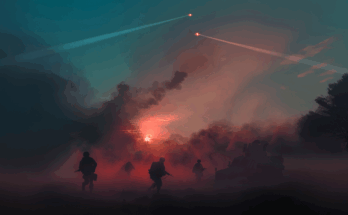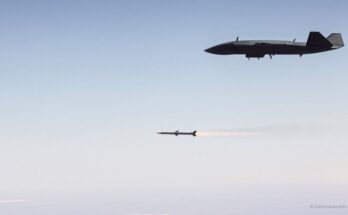by Shaun McDougall, Military Markets Analyst, Forecast International.
Canada’s new Liberal government released its first defense budget in March, and the spending plan portends a continued struggle for the military’s troubled acquisition system. The budget plan estimates that defense spending will total CAD18.6 billion in the 2016/17 fiscal year (April 1 to March 31), which is about CAD578 million less than projected under the previous Conservative government’s 2015 budget plan. Planned spending of CAD19.5 billion in 2017/18 would actually be higher than the CAD18.7 billion figure contained in last year’s budget, but that increase hides a more alarming issue. Namely, the 2016 budget takes some CAD3.7 billion worth of procurement funding allocated for large-scale projects in the 2015/16 to 2020/21 timeframe, and defers it to beyond 2020.
“To ensure that funding is available when key capital acquisitions will be made, funding that is not yet allocated to specific projects, or that cannot be spent due to unforeseen delays in planned projects, can be moved forward into future years when it will be needed,” the budget plan says. The following chart, contained in the government’s 2016 budget presentation, compares the new procurement spending trajectory with spending under the previous plan. The procurement budget was due for a significant increase over the next two years, but the funding ramp-up will now be much more gradual. In exchange for the slowdown, the government claims that procurement spending will outpace the old budget plan beyond 2020. Note that the chart only covers funding for large capital projects, and does not include a multitude of smaller programs.

The optimistic long-term outlook for procurement spending is a bit of a pipe dream, and there is no guarantee that acquisition funding will actually materialize. This fact is clearly recognized in the chart itself, which states, “The annual profile of this funding may be subject to change depending on project schedules.” Deferring procurement dollars is nothing new for Canada, and Prime Minister Justin Trudeau’s first budget actually feels more like a continuation of the inconsistent defense spending plans from the Conservatives than anything else. Under former Prime Minister Stephen Harper, defense budgets in 2012 and 2014 deferred CAD3.5 billion and CAD3.1 billion worth of capital expenditures, respectively. In both years, the government said the funding shift was the result of continued program delays. The resulting lack of procurement funding, however, exacerbated delays for certain programs and spawned brand new delays for programs that were previously on schedule. The budget, as it were, became stuck in a self-defeating spiral.
In reality the problem is twofold. To be sure, Canada needs to provide its military with a stable acquisition spending plan capable of supporting a variety of requirements, both large and small. But, perhaps more importantly, the government also needs to overhaul and streamline an overburdened military acquisition system in which lengthy delays have become the norm.
The military runs the risk of its procurement coffers running dry when the bills come due. The government canceled plans to procure the F-35 Joint Strike Fighter, and now intends to launch a competition to replace its CF-18s. A fixed-wing search-and-rescue program has been in the works for over a decade, and finally appears to be gaining traction. Even a search for a medium-size unmanned aerial vehicle, which should be a relatively straightforward acquisition, has dragged on for years. Shipbuilding requirements are also piling up, with a long-delayed auxiliary in the works and a new surface combatant on the horizon.
Next year’s budget will likely be heavily influenced by a broad defense review recently launched by the government that will examine everything from equipment needs to the types of missions the military expects to face. Officials have said the review will not delay a search for a CF-18 replacement, but it remains to be seen what impact it will have on other programs. Should programs be scaled back or canceled, then the procurement funding profile in the 2016 budget will surely change.
Please feel free to use this content with Forecast International and analyst attributions, along with a link to the article. Contact Ray Peterson at +1 (203) 426-0800 or via email at ray.peterson@forecast1.com for additional analysis.
The Forecast International International Military Markets series examines the military capabilities, equipment requirements, and force structures inventories of 140 countries, with corresponding coverage of the political and economic trends shaping the defense market outlook for individual countries and regions.
For 50 years, Forecast International intelligence reports have been the aerospace and defense industry standard for accurate research, analysis, and projections. Our experienced analysts compile, evaluate, and present accurate data for decision makers. FI's market research reports offer concise analysis of individual programs and identify market opportunities. Each report includes a program overview, detailed statistics, recent developments and a competitive analysis, culminating in production forecasts spanning 10 or 15 years. Let our market intelligence reports be a key part of reducing uncertainties and mastering your specific market and its growth potential. Find out more at www.forecastinternational.com



